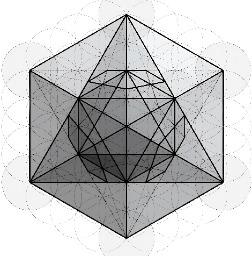Fractal Geometry
06062025
Fractal geometry, with its infinite intricacy and self-replicating patterns, transcends mere mathematical curiosity to embody profound philosophical, aesthetic, and existential truths about the universe. At its core, fractal geometry reveals a fundamental tension between the finite and the infinite: a finite equation or process can generate boundless complexity, as seen in the Mandelbrot set or Koch snowflake. This mirrors the paradox of existence itself—how finite systems (a seed, a cell, a thought) unfold into infinite expressions of life and consciousness.
[1] The Language of Nature:
Fractals are nature’s hidden syntax. Mountains, rivers, ferns, and lightning bolts all exhibit self-similar patterns, suggesting that the universe operates through recursive, iterative algorithms. A tree branch mirrors the structure of the whole tree, and a rivulet in a delta echoes the shape of the entire river. This implies that complexity in nature is not arbitrary but emerges from simple rules repeated across scales—a democratization of form where every fragment contains the blueprint of the whole. It challenges the Euclidean ideal of "perfect" shapes (circles, triangles) and instead celebrates roughness, fragmentation, and asymmetry as the true geometry of reality.
[2] The Metaphor of Infinity:
Fractals dissolve the boundary between the microscopic and the cosmic. Zooming into a fractal reveals endless layers of detail, evoking the ancient concept of *as above, so below*. This recursive infinity mirrors human consciousness, where a single thought can spiral into vast intellectual or emotional landscapes, and the structure of neurons in the brain resembles the branching of galaxies. Fractals thus symbolize the holographic nature of existence: each part contains the whole, and the whole is reflected in every part.
[3] Chaos and Order Intertwined:
Fractals arise from deterministic equations yet produce unpredictable, chaotic beauty. The edge of the Mandelbrot set, for instance, is infinitely complex despite its simple origin. This duality—order birthing chaos, chaos concealing order—parallels the universe’s dance between entropy and emergence. It suggests that creativity and destruction are not opposites but collaborators, as seen in natural phenomena like hurricanes (orderly spiral, chaotic force) or the formation of life from primordial chaos.
[4] Aesthetic Transcendence:
Fractals evoke a visceral awe, tapping into what philosopher Immanuel Kant called the *mathematical sublime*—the thrill of confronting infinity. Their intricate symmetry and organic flow resonate with human perception of beauty, hinting that aesthetic harmony is rooted in mathematical principles. Artists like Pollock and Hokusai have unconsciously channeled fractal rhythms, while digital art now harnesses fractals to create hyper-detailed, otherworldly landscapes. This blurs the line between art and mathematics, positioning fractals as a universal aesthetic code.
[5] Existential Humility and Connection:
Fractal geometry humbles human ambition. No matter how deeply we zoom into a fractal, there is always more to discover—an allegory for the limits of knowledge. Yet it also fosters a sense of kinship with the cosmos: the same patterns in a seashell appear in spiral galaxies, suggesting a shared algorithmic heartbeat. This duality—epistemological humility and cosmic unity—echoes spiritual traditions that emphasize interconnectedness (e.g., Buddhism’s *Indra’s Net*, where every jewel reflects all others).
[6] Practical and Philosophical Applications:
Beyond theory, fractals model real-world phenomena: tumor growth, stock market fluctuations, and internet traffic. They challenge reductionism by showing how macro-scale complexity arises from micro-scale simplicity. Philosophically, they redefine "dimension": fractal dimensions (e.g., 1.89 for a coastline) quantify roughness, offering a new lens to measure the world’s texture. This reshapes our understanding of space, matter, and even time, as fractal patterns appear in heartbeat rhythms and galactic distributions.
[7] The Illusion of Control:
Fractals expose the folly of human attempts to dominate nature. A coastline’s fractal length defies precise measurement


